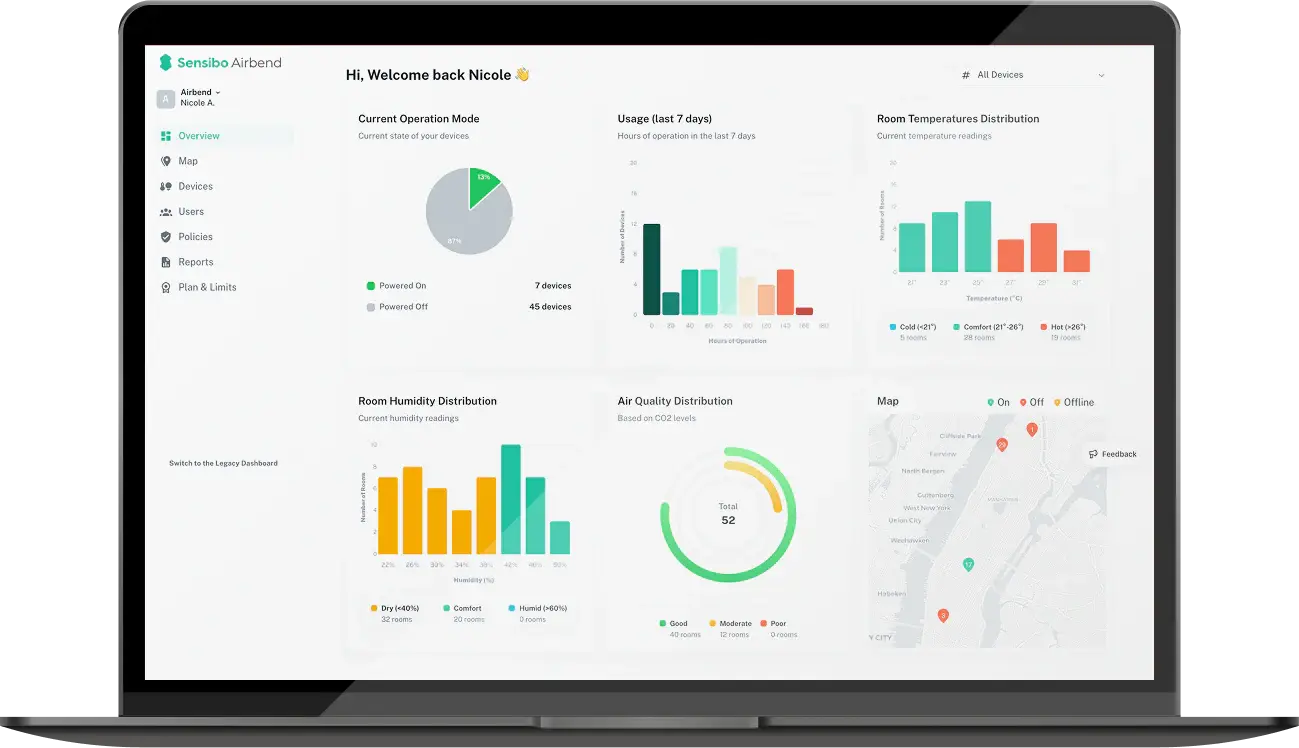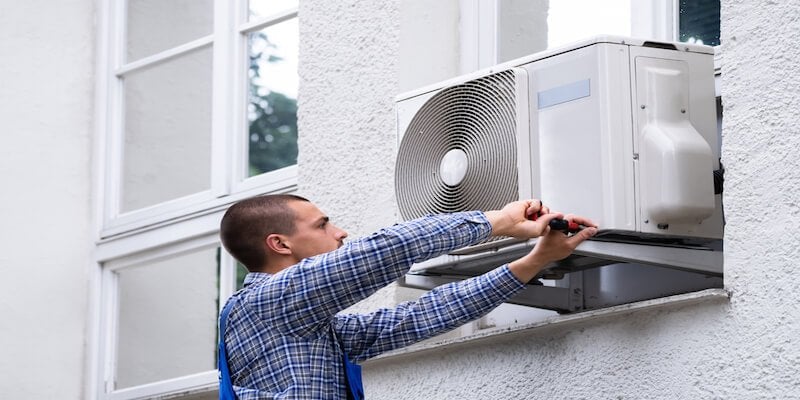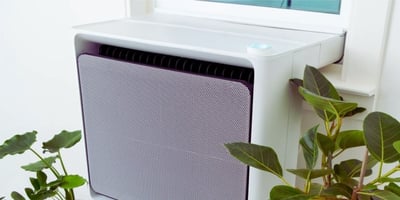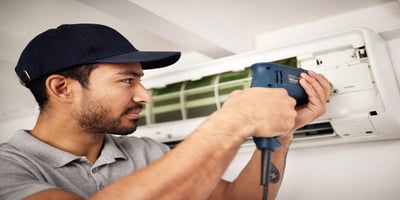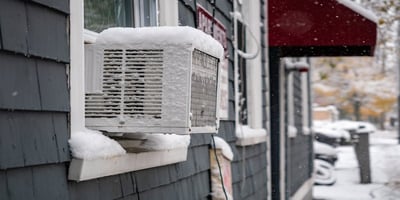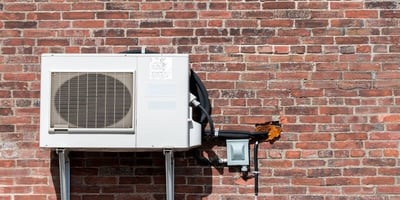Expert Tips for Installing a Window AC Unit: A Complete Guide
Key Takeaways
- Structural support determines longevity: Units with proper bracket systems last 8-12 years compared to 2-3 years for inadequately supported installations.
- Electrical capacity assessment prevents failures: Calculating total circuit load before installation eliminates 70% of electrical-related problems.
- Window compatibility affects complexity and costs: Double-hung windows offer straightforward installation, while casement and sliding windows require specialized solutions.
- Professional installation justifies costs through performance: The $150-300 investment often pays for itself through improved efficiency and warranty coverage.
- Proper drainage angle prevents water damage: 1/4 inch exterior tilt maintains cooling efficiency while preventing mold growth and electrical hazards.
- Quality weatherstripping maintains long-term efficiency: Professional-grade materials improve energy efficiency by 15-20% over multiple seasonal cycles.
Installing a window air conditioner is a fascinating mix of engineering precision and practical craftsmanship when it comes to cooling your home. Central air systems keep the whole house comfortable, and portable units give you more options. Window installations, on the other hand, cool specific areas and have permanent mounting benefits that strike a balance between convenience and performance.
This window AC installation guide examines the nuanced considerations that separate successful installations from costly failures, analyzing the technical requirements alongside real-world implementation challenges.
Analyzing Room Dynamics and Cooling Requirements
When you look at how space characteristics affect cooling capacity, you can see that there are many factors that basic BTU calculations don't take into account. Theoretically, a room with 200 square feet needs 6,000 BTUs, but depending on how it is built, the same amount of square footage can need a lot more or less cooling.
Large windows facing south can make cooling needs go up by 15–20%, while installations in basements can make needs go down by similar amounts. When choosing the size of a window air conditioner, you can't just use simple square footage formulas. You also have to think about these changes in thermal load.
Frigidaire's Gallery series of modern energy-efficient units have variable-speed compressors that work better than traditional single-speed units to meet cooling needs. This technology lets units that are a little too big work well by cycling at lower speeds instead of turning on and off quickly like regular models do.
 Evaluating Window Compatibility and Structural Considerations
Evaluating Window Compatibility and Structural Considerations
Window selection for AC installation presents a hierarchy of compatibility that significantly impacts both installation complexity and long-term reliability. Double-hung windows offer the most straightforward installation platform, providing natural support ledges and straightforward sealing opportunities.
Casement windows require specialized mounting brackets that cost 30-50% more than standard hardware while creating aesthetic compromises. The crank mechanisms must be protected from unit weight and vibration, often necessitating reinforcement modifications.
Sliding windows present unique sealing challenges at the panel interfaces where standard weatherstripping proves inadequate. Professional installers often recommend custom foam solutions or secondary sealing systems for these configurations.
The structural analysis extends beyond window type to frame material and condition. Aluminum frames distribute weight more evenly than wood but provide fewer secure attachment points. Vinyl frames offer good insulation properties but may flex under load, requiring additional support brackets.
Electrical Infrastructure Assessment
The electrical needs for window air conditioners can be as simple as plugging them in or as complicated as making major upgrades to the electrical system. Most units with less than 8,000 BTUs work well with existing 115V household circuits. However, units with more than 8,000 BTUs need their own 230V connections.
When doing an electrical assessment, you need to know both the short-term and long-term power needs of the circuit. A 12,000 BTU unit that draws 11 amps may fit on a 15-amp circuit, but using that circuit with other appliances can cause problems and be dangerous.
Window air conditioners may not work with GFCI-protected outlets, which are common in kitchens and bathrooms. Sometimes, the inrush current when the compressor starts up trips the GFCI protection, which causes problems with operation that need circuit changes.

Installation Methodology Comparison
There are big differences between professional installation methods and do-it-yourself methods. Each has its own pros and cons. Professional installers usually focus on structural support systems that go beyond just attaching the window frame. These systems can include brackets on the outside or support structures on the inside.
The quality of the mounting brackets varies a lot depending on the brand and the price. High-end brands like Friedrich offer heavy-gauge steel brackets with multiple attachment points, while low-cost options often only come with flimsy aluminum brackets that bend when they are used.
The order in which you install things affects both safety and final performance. The professional way is to fully assemble and test the brackets before putting them in place, while DIY installations often try to do both at the same time, which raises the risk of accidents.
Technical Performance Optimization
Proper installation directly impacts operational efficiency through multiple pathways. Drainage angle optimization requires precise leveling - too little slope prevents condensation removal, while excessive tilting affects refrigerant flow and cooling performance.
Sealing quality determines both energy efficiency and comfort levels. Professional-grade weatherstripping materials maintain sealing integrity through multiple seasonal cycles, while consumer-grade options often fail within a single season.
The air circulation patterns around properly installed units create positive pressure differentials that improve cooling distribution. Poor installation allows air leakage that disrupts these patterns, reducing effective cooling capacity by 10-15%.
Maintenance Accessibility and Long-term Considerations
Installation choices significantly impact maintenance requirements and accessibility. Units mounted with removable brackets allow easier seasonal removal for cleaning and storage, while permanent installations require in-place maintenance that can be challenging.
Filter access represents a critical design consideration often overlooked during installation. Front-loading filters provide easier maintenance than side-access designs, particularly in tight window installations where side clearance is limited.
The installation angle affects condensation management throughout the unit's lifespan. Proper drainage prevents mold growth and water damage, while poor drainage creates ongoing maintenance challenges that compound over time.
Safety Analysis and Risk Management
 Window AC installation presents multiple safety considerations that extend beyond immediate installation risks. The combination of electrical connections, structural loading, and elevated work creates a complex safety environment.
Window AC installation presents multiple safety considerations that extend beyond immediate installation risks. The combination of electrical connections, structural loading, and elevated work creates a complex safety environment.
Falls during installation account for the majority of window AC-related injuries, according to Consumer Product Safety Commission data. The weight distribution of units creates unexpected leverage forces that can destabilize ladders or cause installer loss of balance.
Electrical safety requires understanding both immediate shock hazards and long-term fire risks. Overloaded circuits, improper grounding, and moisture exposure create electrical hazards that may not manifest immediately but pose ongoing safety risks.
Cost-Benefit Analysis of Professional vs. DIY Installation
An economic analysis of installation methods shows that there are subtle trade-offs between short-term costs and long-term value. Professional installation usually costs between $150 and $300, but it comes with a warranty and liability protection that DIY installation doesn't.
Homeowners who want to save money like DIY installation, but it can cost more than $100 in hidden costs for tools and time. The learning curve for how to install things correctly may mean that you have to try several times to get results that look professional.
When you look at the costs, you also have to think about insurance. Some homeowner's insurance policies only cover AC-related damage if it is installed by a professional, so doing it yourself could be a risk.
Seasonal Considerations and Climate Adaptation
The time of installation has an effect on both performance and how long it lasts. Installations in the spring give people time to get used to the new equipment before the busy summer season, but installations in the summer are often rushed and poorly planned.
Things that are specific to the climate affect the requirements for installation. In humid climates, drainage systems need to be better, and hardware needs to be more resistant to corrosion. In dry areas, exposed parts may need extra UV protection.
Winter storage and reinstallation create maintenance needs that happen over and over again. Good planning can help cut down on these needs. Bracket systems that are easy to take down cut down on seasonal work while keeping the system safe while it's in use.
Technology Integration and Smart Features
Modern window AC units incorporate smart technology that affects installation requirements. WiFi-enabled units may require proximity to routers or network extenders, influencing optimal placement decisions.
Smart thermostats and automation systems can integrate with window units but may require additional wiring or power supplies that affect installation complexity. The growing ecosystem of connected home devices creates new installation considerations beyond basic cooling functionality.
 Quality Assessment and Performance Metrics
Quality Assessment and Performance Metrics
Successful window AC installation can be measured through multiple performance indicators. Temperature consistency, energy consumption, noise levels, and operational reliability provide quantitative assessment criteria.
The installation quality directly correlates with these performance metrics. Proper mounting reduces vibration noise, adequate sealing improves energy efficiency, and correct electrical connections ensure reliable operation.
Long-term performance tracking reveals installation quality over time. Units with professional-grade installation typically maintain efficiency ratings for 8-12 years, while poor installations may show performance degradation within 2-3 seasons.
Strategic Installation Planning
Effective window AC installation requires strategic planning that considers immediate cooling needs alongside long-term home comfort strategies. The placement decision affects room airflow patterns, furniture arrangement, and overall living space functionality.
Multiple unit installations in larger homes require coordination to prevent electrical overload and optimize cooling distribution. The sequential installation approach allows load testing and adjustment before complete system activation.
Future upgrade considerations should influence current installation decisions. Bracket systems and electrical infrastructure investments made during initial installation can accommodate larger units or system expansions without complete reinstallation.
This analytical examination of window AC installation reveals the complexity underlying seemingly straightforward home improvement projects. The intersection of technical requirements, safety considerations, and performance optimization creates a decision matrix that rewards careful planning and skilled execution while penalizing shortcuts and oversimplifications.
FAQ
What's the most common reason window AC units fail after installation?
Inadequate structural support accounts for roughly 60% of window AC failures. Units that rely solely on window frame support without proper bracket reinforcement typically show mounting issues within 2-3 seasons, while properly supported installations maintain stability for 8-12 years.
How do I know if my electrical system can handle a window AC unit?
Units below 8,000 BTUs typically operate on standard 115V household circuits, but you need to calculate total circuit load. A 12-amp AC unit requires a 15-amp circuit with minimal other devices. Units above 12,000 BTUs generally require dedicated 230V circuits and professional electrical work.
Can I install a window AC unit in any type of window?
Double-hung windows provide the most straightforward installation with natural support ledges. Casement windows work but require specialized brackets costing 30-50% more than standard hardware. Sliding windows present unique sealing challenges that often require custom solutions.
What's the difference between professional and DIY installation quality?
Professional installations typically incorporate structural support systems beyond basic window frame attachment and use commercial-grade weatherstripping materials. DIY installations often skip these elements, resulting in 10-15% reduced cooling efficiency and shorter operational lifespans.
How much should a window AC unit tilt toward the outside?
The optimal tilt is 1/4 inch toward the exterior for proper condensation drainage. Less tilt prevents water removal, leading to mold growth. Excessive tilt (more than 1/2 inch) affects refrigerant flow and reduces cooling efficiency by 5-10%.




























